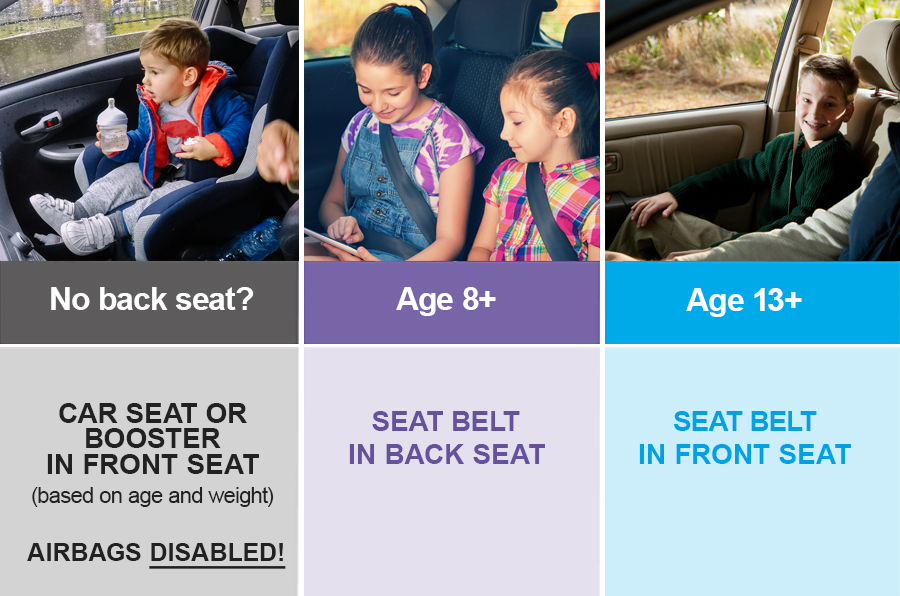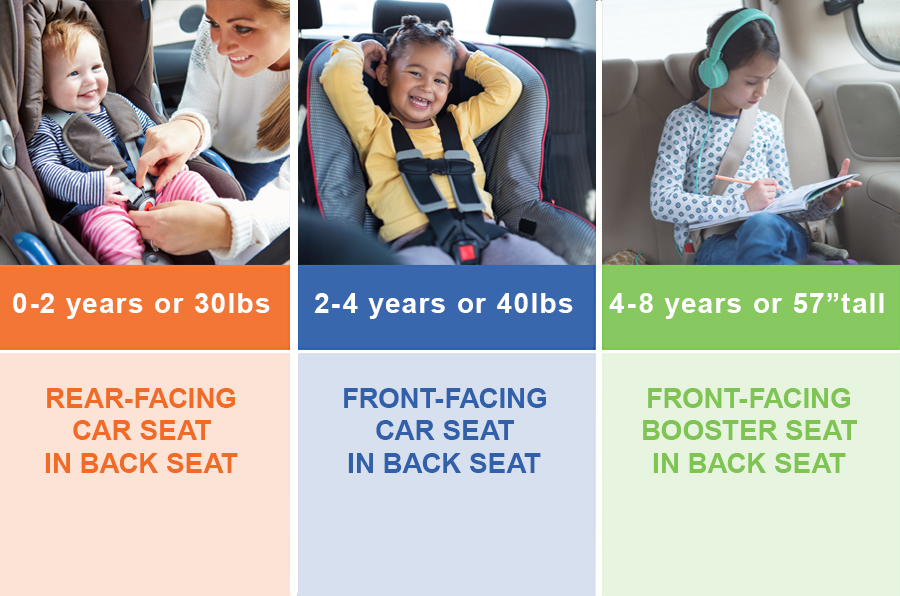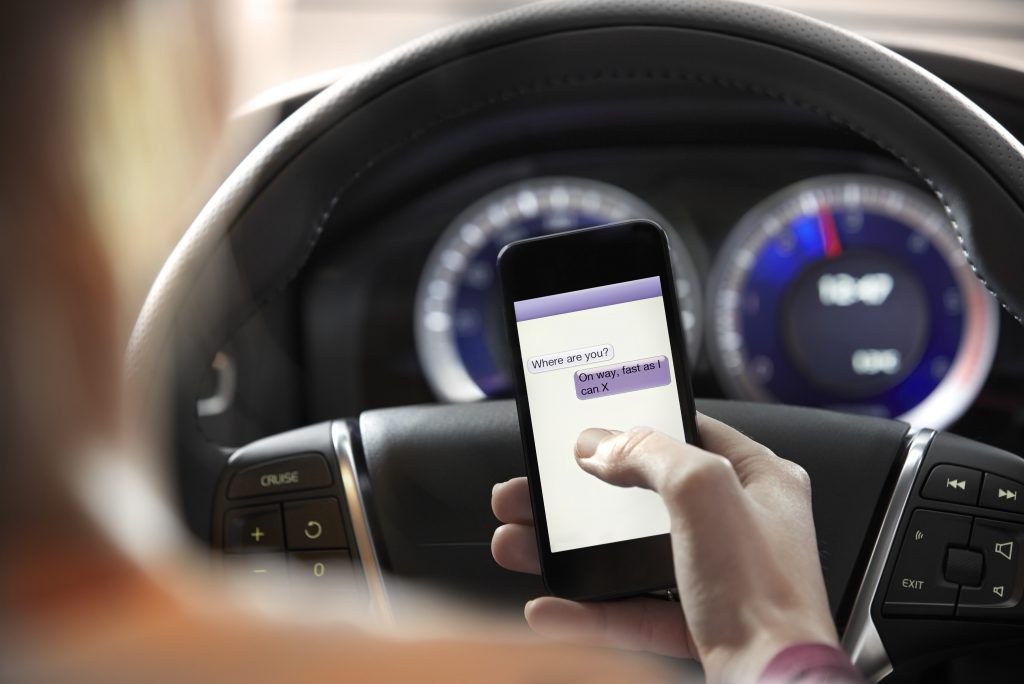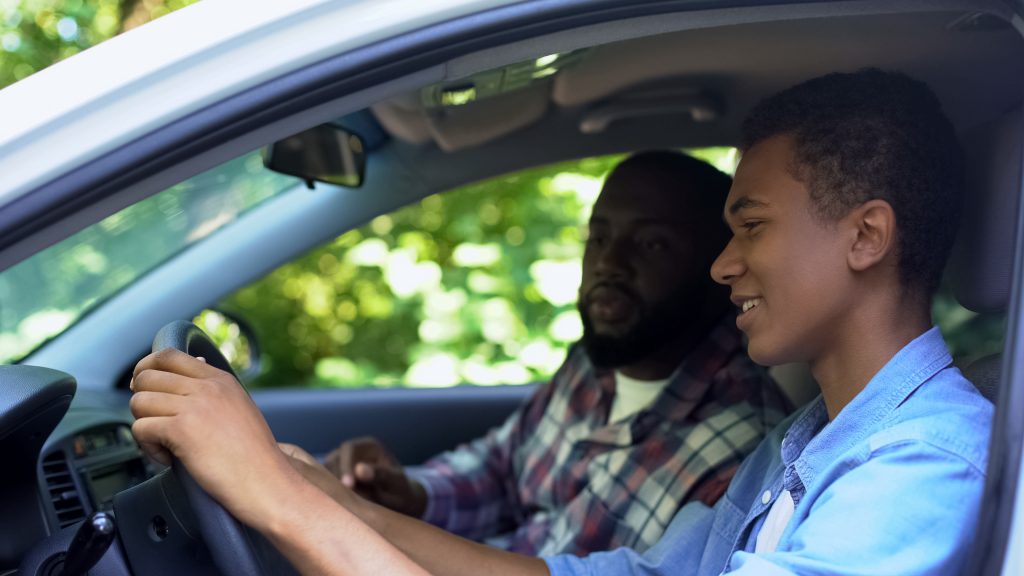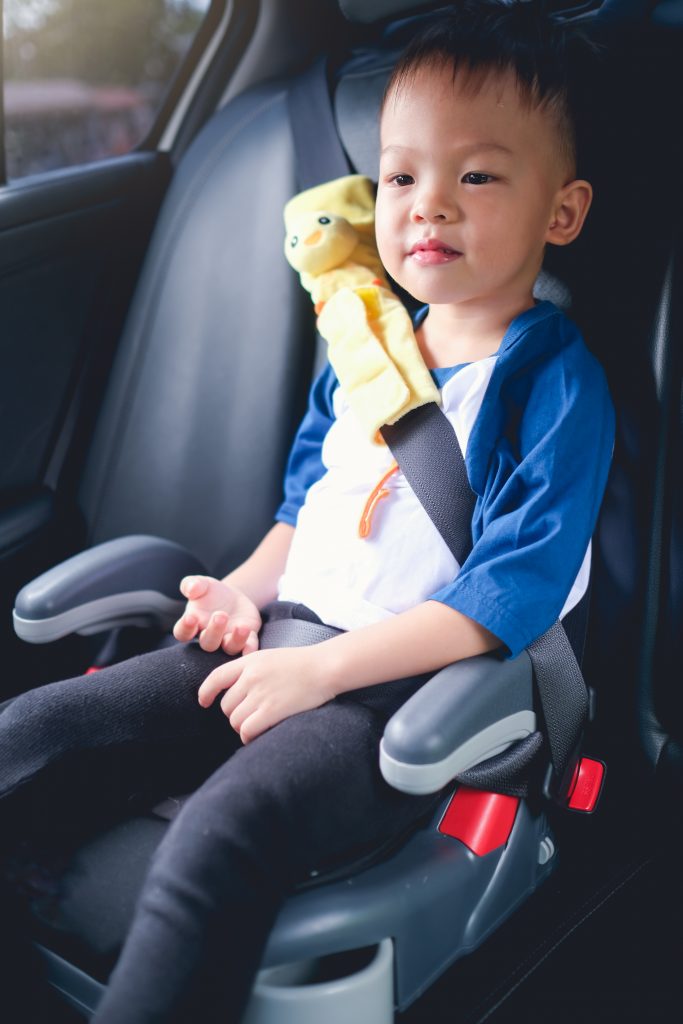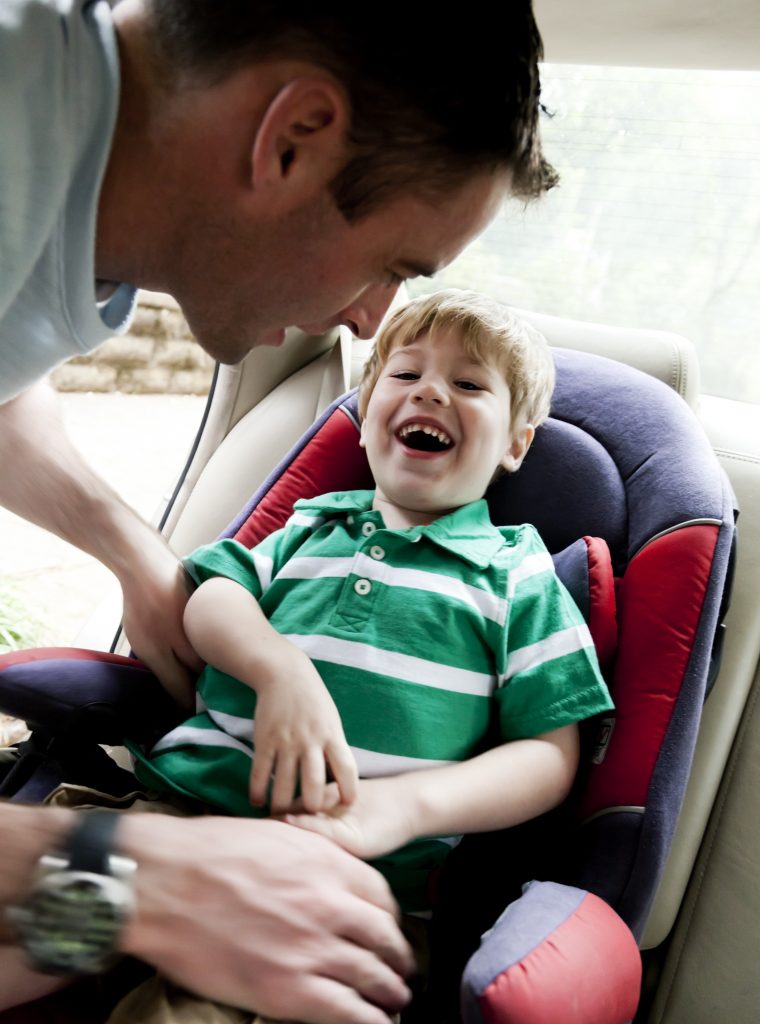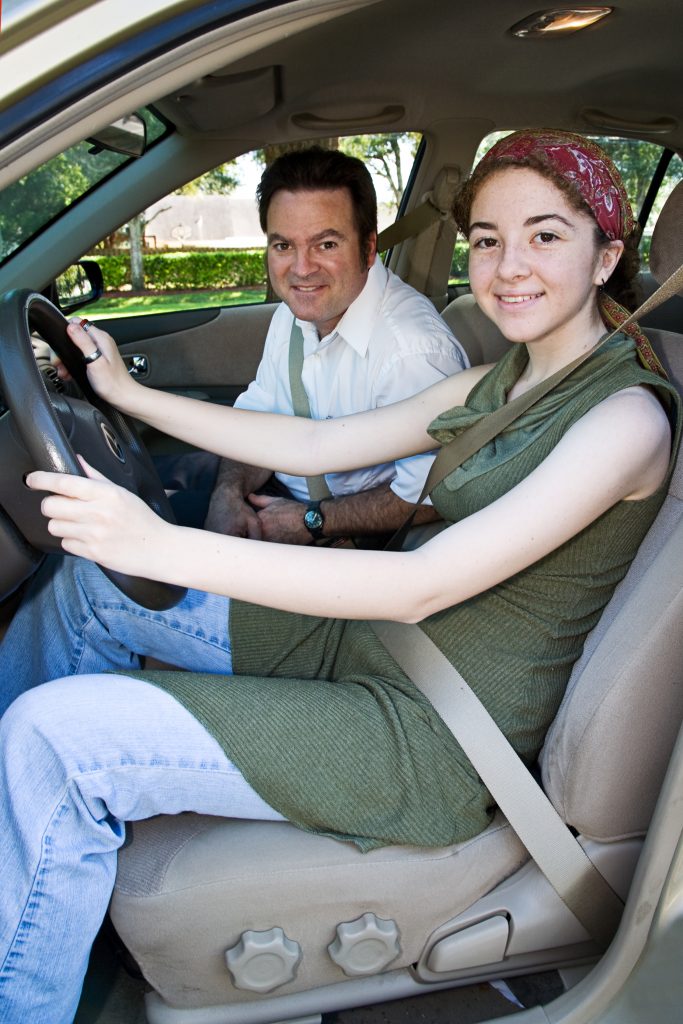Keeping your children safe
From the day you bring your child home until you’re helping them learn to drive – safety is always on your mind as a parent. At the Brain Injury Alliance of New Jersey, we want to help you keep your kids safe in cars, buses and bikes as they grow. The following is a collection of important safety info, tips and resources just for parents:

Keeping Kids Safe In The Car
Buckling kids safely into the car can be tricky – from rear-facing or front facing car seats and 5-point harnesses to booster seats and beyond. Here’s an easy guide to help you know which type is right for your child and when to make the switch as they grow. Find the right seat for your child »
Is your car seat safe?
Only 5% of parents install car seats correctly. Make sure your car or booster seats are installed correctly. Have them inspected for FREE!
Bikes, Scooters & Skateboards
As a parent (and former child) you know one thing for sure – kids love anything with wheels. From big wheels to bicycles and scooters to skateboards and rollerblades, they’re always on the go. While kids are focused on the fun, you’ll be teaching them how to do it safely.
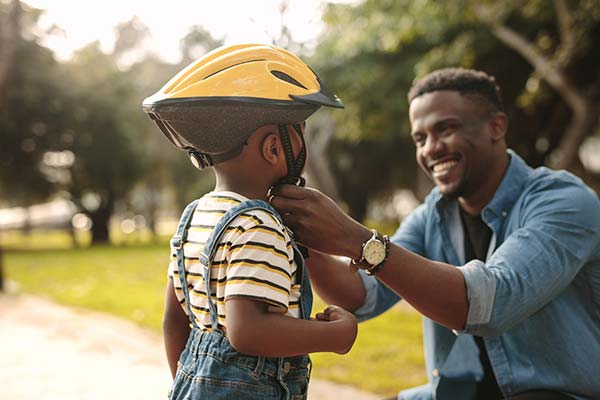
Making sure your kids wear a helmet to protect their head in the event of a crash is a no brainer. But wait! Before you strap on that helmet, make sure it:
- Is designed for the right activity (bicycle helmets are different than those for skateboarding/rollerblading)
- Fits properly – helmets that are too large or small will not protect them as they should
- Does not have any cracks or defects
- Has a SNELL or ASTM seal of approval on it.
- Is replaced after a crash or when it no longer fits correctly
Get more helmet tips for kids » (Spanish and English)

Teaching your child to ride a bike is an exciting milestone. After the training wheels come off, make sure you keep up the lessons so they know where and how to ride safely.
- Kids 10 and younger should stay on sidewalks and areas without cars
- As kids get older and are ready to venture farther, make sure they learn important rules of riding and practice with them.
- Ride with them to school or the park, until you are sure they are skilled and comfortable to do it on their own. And make sure you always wear YOUR helmet to set a good example for them.
- Review safe bicycle riding manuals with them and practice.
- Safe Bicycle Riding Brochure
- NJ Bicycling Manual
- Bike Right Resources
- Bike Helmet Fit Test Video
- CDC Helmet Safety Fact Sheet
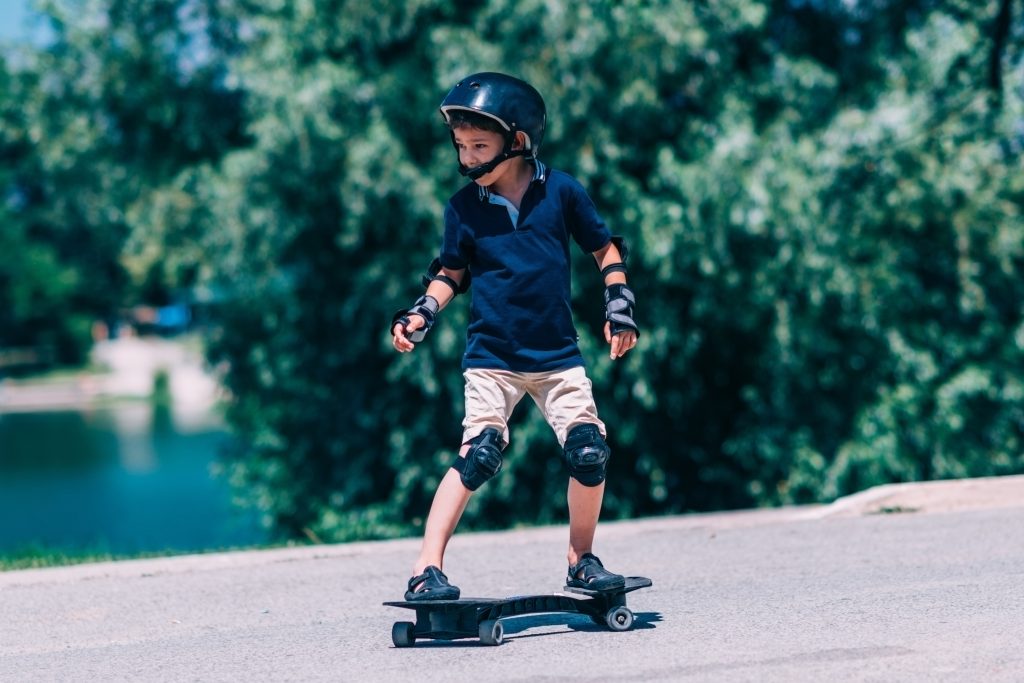
Don’t forget the safety gear that can help prevent injuries when your kids are using bikes, skateboards, scooters and rollerblades:
- A properly fitted, approved helmet
- Knee pads, elbow pads and gloves
- Reflective clothing so drivers and pedestrians see them
- Reflectors or lights on the front and back of bicycles
- Appropriate footwear – sneakers or shoes should be worn instead of flip-flops or open sandals.

Riding in Cars, Busses, Trucks
- When getting picked up, wait in a safe place
(away from the trees, bushes, cars) - Wait until seen by the driver to go near vehicle
- Stay seated while the vehicle is in motion and use seatbelts
- Have the driver drop you off on the curbside if possible
- Wait for the driver to signal that it is safe to cross the street
- Look left-right-left before crossing the street
View the School Bus Safety Infographic – Schoolbusfacts.com
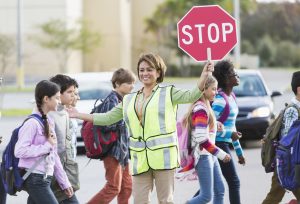
Walking in School Zones
- Watch for cars – because drivers may not always see you
- Look left-right-left before crossing the street
- Obey crossing guards
- Do not wear headphones or use electronic devices while walking – so you can hear and see approaching vehicles
- Be careful walking in parking lots where cars and buses may be pulling out.
- Wait at designated drop-off and pick-up areas for parents
View the Dangers in School Zones Infographic – Safe Kids Worldwide
47.5
million people in the US ride their bike annualy
66
percent of U.S. runners run on roadways
5
is the average age when most kids learn to ride a bike
Top 10 Pointers for Parents
Brush up on the current licensing process, what’s required for the New Jersey’s Graduated Driver Licensing (GDL), how to apply and how to find a good, licensed driver’s education school/course. Make sure you know all the info on GDL requirements and restrictions before you and your teen get behind the wheel.
If you drive without wearing a seatbelt or occasionally text while driving, your teen will, too. Take note of your bad habits and do your best to set a good example. Here are some suggestions from Toyota’s TeenDrive365 on being the role model your teen needs to become a safe driver.
Sit down with your teen and review the steps for getting their Graduated Driver Licensing (GDL), the different requirements, laws, use of GDL decals and select a driver’s education course. Here are some samples of parent-teen agreements:
Teaching your teen how to drive sounds much easier than it actually is. It takes time and patience. Give your teen gentle, constructive critiques of their driving. Whether your teen admits it or not, learning to drive is stressful and watching you grab the dashboard will only make them more nervous. That’s why empty parking lots are great places to start. Build up their skills and confidence before taking them on the road. Other tips:
- Practice on progressively harder roads: quiet streets, school zones, busy highways.
- Practice at night and in different weather conditions including rain and snow
- Avoid talking about sticky subjects while they are driving, like poor grades or curfew
- Don’tpoint out errors in sweeping, general terms, such as “You’re always in a hurry” or “You never listen.”
Your new driver has a lot to learn — and you play an important role in his or her education. Aside from inexperience, distracted driving is the second main cause of crashes for teens. While most teens know they shouldn’t text and drive, it’s still important to reinforce the point by making sure you discuss other distractions they will face:
- Adjusting music/radio
- Using GPS/navigation systems
- Making phone calls (even hands-free)
- Plugging their phone in a car charger
- Eating while driving
- Reaching for an object
- Talking to other passengers
Anything that takes their full attention from the road even just for a few seconds can be dangerous.
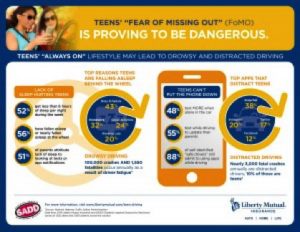
It’s important to teach your teen how to recognize hazards and develop good judgment needed to navigate them safely. Talk to them about:
- Making left turns into oncoming traffic
- Merging on and off highways at high speed
- Watching out for vehicles pulling out of driveways and parking spaces
- Driving slower in construction areas and near schools
We know you’ve spent most of your time trying to help your teen avoid a crash, but it is also important to teach them what to do if a crash does occur. Things like safely exiting the vehicle, what information to collect from other drivers and calling the police. Review this post-crash checklist with your teen and keep a copy in the vehicle.
- What to do immediately after a crash
- What information to get from others involved
- How to document the crash
Studies have shown that teenagers engage in risky behavior when parents aren’t in the car. Fortunately, there are lots of apps and tech tools designed to help parents and teens practice safe driving.
NOTE: The following examples of apps and/or devices for reference only. We do not endorse any of the products or services mentioned here.
- Mobile apps – download apps to monitor speed, seat belt usage and limit cell phone use
- Dash Cams & Steering Wheel Sensors – check out Thinkware and the SmartWheel
- GPS Tracking Devices – some auto manufacturers like Ford, Chevrolet and Hyundai offer built-in systems to help new drivers or you can add a system to your vehicle like TeenTrak, MobileTeen, or MotoSafety.
- Alcohol Detectors – some newer car models offer dealer installed detectors or you can buy a small device or transform your smartphone into a breathalyzer with BACtrack.
From a safety standpoint, mid- and full-size cars are often the best choices for teen drivers. Be sure the car is equipped with air bags, electronic stability control and automatic breaking systems. Buying a pre-owned car? You can check the safety ratings online at www.IIHS.org. We know teens want cool, sporty cars – but those often encourage speeding, so try to avoid them. Most teens will agree that a safe car is better than no car.
Here’s a list of trusted resources for more tips and information on teen driving:
- NJSmartRoads – From the State of New Jersey
- New Jersey Manufacturers Insurance Company-NJM’s Teen Driver Safety Program
- Allstate Foundation: Teen Safe Driving Overview
- Teen Driver Safety – Tips and resources from State Farm Insurance
- Teen Safe Driving Coalition – Safety information from Allstate and the National Safety Council
- Share the Keys – A 60-90 minute interactive orientation for parents and teens
- NJ Teen Driver Resource Guide (pdf)
- TeenDriverSource: From the Children’s Hospital of Philadelphia (CHOP) – a web-based program to help parents supervise their teen’s driving practice
- Keys2Drive – The AAA Guide to Teen Driver Safety
- AAA StartSmart – free newsletters with tips to help you through the process.
- Countdown 2 Drive – From SafeKids Worldwide, this site helps parents bridge the gap from safe teen passengers to safe teen drivers
- End Distracted Driving (EndDD) – A website sponsored by sponsored by the Casey Feldman Foundation dedicated to inspiring individuals and communities to take action to end distracted driving.
- Drivers Education in New Jersey – A private website with information from the NJ Motor Vehicle Commission
- TeenSmart – A teen driver crash reduction program, endorsed by insurance agencies
Videos and Resources for Parents
Teaching your kids to be safe while walking, cycling or riding in the car isn’t easy, but there are plenty of resources to help guide you through every stage:
- Car Seat Safety by Age: Educational videos on how to choose and install seats for your children, Children’s Hospital of Philadelphia – Watch videos
- Beyond Booster Seats: When is My Child Ready for an Adult Seatbelt, NHTSA – Watch video
- Graduated Driver’s License Made Simple: New Jersey, Impact Teen Drivers– Watch video
- Distracted Walking: The Growing Phone-Related Danger, NBC News – Watch video
- “Staying Safe In The Car” tips for parents – View brochure
- Car Seat Recommendations for Children – View Guide

